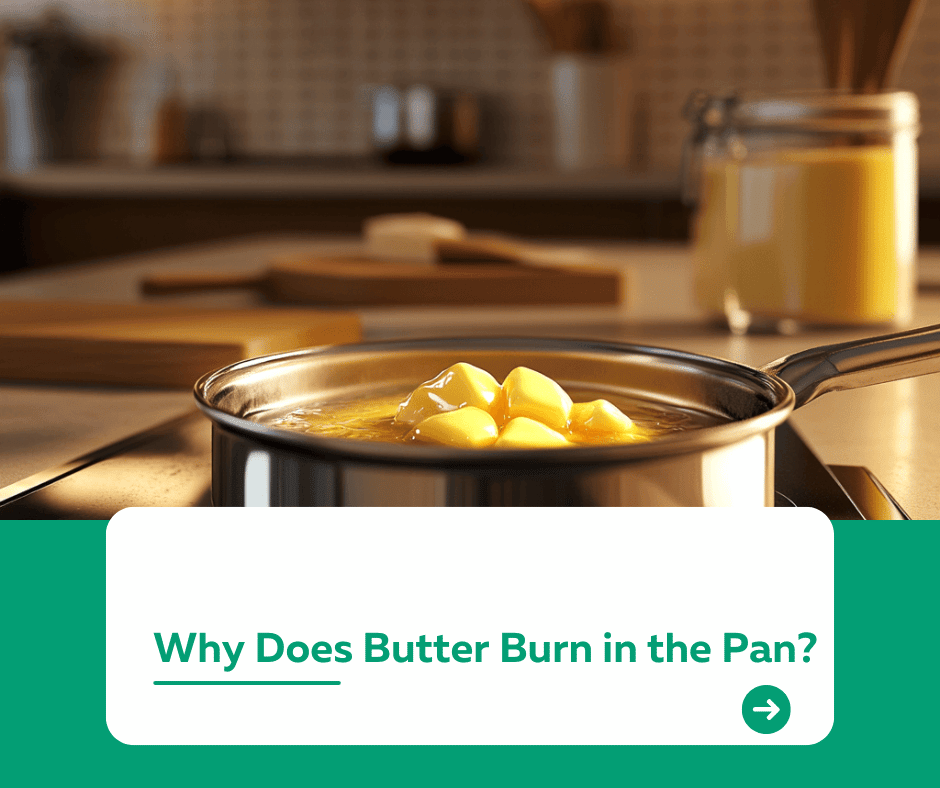
Introduction
Have you ever started cooking with butter, only to see it turn brown or black and ruin your dish? Why does butter burn in the pan, and how can you prevent it? Understanding the science behind butter’s behavior in the pan can help you use it effectively and avoid kitchen mishaps.
1. The Composition of Butter
Butter is made up of three main components:
1️⃣ Milk Solids: Proteins and sugars that caramelize and burn at high temperatures.
2️⃣ Water: Makes up about 16–20% of butter and evaporates when heated.
3️⃣ Fat: The part that provides rich flavor and smooth texture.
When heated too much, the milk solids and sugars are responsible for the browning or burning.
2. The Science of Butter Burning
Low Smoke Point
Butter has a low smoke point of around 350°F (175°C). At temperatures higher than this, the milk solids and sugars start to burn, creating an unpleasant taste and smell.
Fast Heating
Butter heats quickly, especially in thin or lightweight pans. Without careful control, it can go from melting to burning in seconds.
3. How to Prevent Butter from Burning
3.1 Use Clarified Butter (Ghee)
- Clarified butter has the milk solids removed, increasing its smoke point to about 450°F (232°C).
- Ideal for high-heat cooking like frying and sautéing.
3.2 Add a Neutral Oil
- Mixing butter with an oil like canola or vegetable oil raises the smoke point, reducing the risk of burning.
3.3 Monitor Heat Levels
- Cook on medium to low heat when using butter.
- Preheat the pan lightly before adding butter, but don’t let it overheat.
3.4 Use Nonstick or Heavy-Duty Pans
- Nonstick or thick-bottomed pans distribute heat evenly, preventing hotspots where butter might burn.
4. When Brown Butter is Intentional
Burnt butter isn’t always a mistake! Brown butter, or beurre noisette, is made by gently cooking butter until the milk solids caramelize, giving it a nutty flavor.
- Uses: Perfect for sauces, pastries, and enhancing savory dishes.
- Method: Heat butter on low until it turns golden brown and aromatic, then immediately remove it from the heat.
5. Common Mistakes to Avoid
❌ Cooking on High Heat: Butter burns quickly at high temperatures.
❌ Leaving Butter Unattended: It needs close monitoring to prevent burning.
❌ Using the Wrong Pan: Thin pans heat unevenly, increasing the risk of burning.
Conclusion
Butter burns because of its low smoke point and the presence of milk solids that caramelize at high temperatures. By understanding its composition and using techniques like adding oil or using clarified butter, you can enjoy its rich flavor without worrying about burning. For more kitchen insights, visit our Kuestion.com.